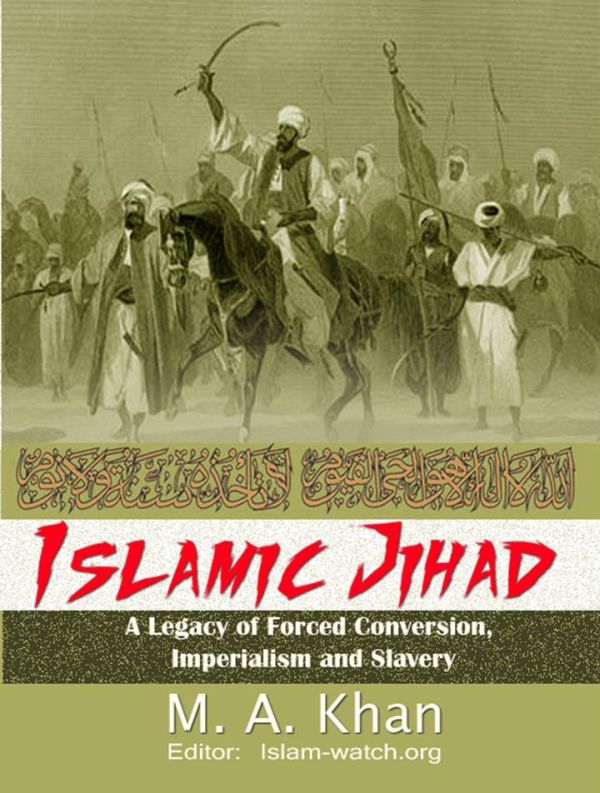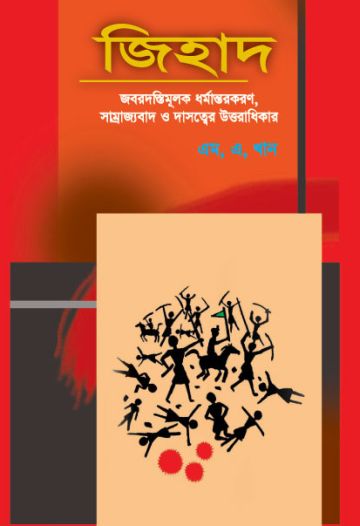This is Part 5 of the chapter "Islamic Slavery" from M. A. Khan's book, "Islamic Jihad: A Legacy of Forced Conversion, Imperialism and Slavery". Upholding the Quran's command and Muhammad's tradition, all Muslim invaders and rulers of India -- from first successful invader Muhammad bin Kasim to last Muslim ruler Tipu Sultan -- engaged in enslavement of Indians. So, the much raved about Mughal period was no different in terms of enslavement (Part 1, Part 4, Part 6).
During Mughal rule (1526…): By defeating Ibrahim Lodi in 1526, Jahiruddin Shah Babur, proud descendent of Amir Timur, established the Mughal rule in India. In his autobiographical memoir Babur Nama, he describes his campaigns against the Hindus as Jihad, punctuated with verse and references from the Quran. The records of capturing slaves during Babur’s reign are not documented systematically. However, in his attack of the small Hindu principality of Bajaur in present-day Pakistan’s North-West Frontier Province, records Babur: ‘they were put to general massacre and their wives and children made captives. At a guess, more than 3,000 men went to their death… [I] ordered that a tower of heads should be set up on the rising ground.’[1] Similarly, he made pillars with the heads of slain Hindus at Agra. In 1528, he attacked and defeated the enemy in Kanauj and ‘their families and followers were made prisoners.’[2] These examples suggest that the enslavement of women and children was a general policy in Babur’s Jihad campaigns. Babur Nama also mentions that there were two major trade-marts between Hindustan and Khurasan, namely at Kabul and Qandahar, where caravans came from India carrying slaves (barda) and other commodities to sell at great profits.
Following Babur’s death (1530), a period of turmoil followed over the rivalry between his son Humayun and Sher Shah Suri, an Afghan. In 1562, Emperor Akbar the Great, Babur’s grandson and an apostate of Islam, prohibited wholesale enslavement of women and children in wars.[3] In Akbar’s reign notes Moreland, ‘it became a fashion to raid a village or a group of villages without any obvious justification, and carry off the inhabitants as slaves’; this prompted Akbar to enact a ban on enslavement.[4] However, the deeply engrained tradition hardly stopped. Despite the ban, Akbar’s generals and provincial rulers went on their own to plunder and enslave non-Muslims. As noted already, Akbar’s small-time general Abdulla Khan Uzbeg boasted of enslaving and selling 500,000 men and women. Even Akbar, disregarding his earlier decree, ordered to enslave the women of the slain Rajputs in Chittor (1568), who committed jauhar. Enslavement had continued across the provinces despite the ban. In ordinary time in Akbar’s reign, notes Moreland, children were stolen or kidnapped as well as purchased; Bengal was notorious for this practice in the most repulsive form (i.e., slaves were castrated).[5] This forced Akbar to reissue the ban on enslavement in 1576. In his reign, witnessed della Valle, ‘servant and slaves were so numerous and cheap that ‘everybody, even of mean fortune, keeps a great family, and is splendidly attended.’’[6] These examples give a clear idea about the scale at which enslavement was taking place even in enlightened Akbar’s reign.
Enslavement undoubtedly worsened during Akbar’s successors Jahangir (1605–27) and Shah Jahan (1628–58), under whose reigns, orthodoxy and Islamization was gradually revived. Emperor Jahangir in his memoir testifies of children in Bengal being castrated by helpless parents for giving ‘them to the governors as slaves in place of revenue.’ ‘This practice has become common,’ he adds. Said Khan Chaghtai, a noble of Jahangir, had ‘possessed 1,200 eunuch slaves alone,’ according to multiple testimonies.[7] Jahangir had sent some 200,000 Indian captives to Iran for sale in 1619–20 alone.[8]
Under next Emperor Shah Jahan, the condition of the Hindu peasants had become unbearable. European traveler Manrique witnessed in Mughal India that the tax-collectors were carrying away destitute peasants along with their children and wives ‘to various markets and fairs’ for selling them to realize the tax. French physician and traveler Francois Bernier, who spend twelve years in India and was Emperor Aurangzeb’s personal doctor, affirms the same. He wrote of unfortunate peasants, who were incapable of paying taxes, that their children ‘were carried away as slave.’[9] During Aurangzeb’s reign (1658–1707), considered devastating to the Hindus, some 22,000 young boys were emasculated in 1659 alone in the city of Golkunda (Hyderabad).[10] They were to be given to Muslim rulers and governors, or sold in slave-markets.
Nadir Shah of Iran invaded India in 1738–39. After committing great massacre and devastation, he captured a large number of slaves and drove them away along with a huge plunder. Ahmad Shah Abdali from Afghanistan invaded India thrice in the mid-eighteenth century. In his victory in the Third Battle of Panipat (1761), some 22,000 women and children of the slain Maratha soldiers were driven away as slaves.[11] As already cited, the last independent Muslim ruler, Tipu Sultan, had enslaved some 7,000 people in Travancore. They were driven away and forcibly converted to Islam.[12] Enslavement of the infidels in India went on as long as Muslims were ruling with authority. The consolidation of power by the British mercenaries in the nineteenth century eventually ended enslavement in India. Even during the Partition (1947), Muslims kidnapped tens of thousands of Hindu and Sikh women and married them to Muslims: a form of age-old enslavement (discussed already). In November 1947, as already noted, Muslim Pathan raiders carried away Hindu and Sikh girls from Kashmir and sold in the markets of Jhelum (in Pakistan).[13]
These are accounts of enslavement by Muslim invaders and rulers mainly in Northern India. Enslavement was going on in earnest in far-off provinces across India, including Gujarat, Malwa, Jaunpur, Khandesh, Bengal and the Deccan, which were either under the control of Delhi or were independent Muslim sultanates. The records of enslavement in those regions were not always recorded systematically.
[1]. Babur JS (1975) Baburnama, trs. AS Beveridge, Sange-Meel Publications, Lahore, p. 370–71
[2]. Ferishtah, Vol. II, p. 38–39
[3]. Nizami KA (1989) Akbar and Religion, Idarah-i-Adabiyat-i-Delhi, New Delhi,, p. 106
[4]. Moreland WH (1995) India at the Death of Akbar, Low Price Publications, New Delhi, p. 92
[5]. Ibid, p. 92–93
[6]. Ibid, p. 88–89
[7]. Lal (1994), p. 116–117
[8]. Levi SC (2002) Hindus Beyond the Hindu Kush: Indian in the Central Asian Slave Trades, Journal of the Royal Asiatic Society, 12(3), p. 283–84
[9]. Lal (1994), p. 58-59
[10]. Lal (1994), p. 117
[11]. Ibid, p. 155
[12]. Hasan M (1971) The History of Tipu Sultan, Aakar Books, Delhi, p. 362–63
[13]. Talib, SGS (1991), Muslim League Attack on Sikhs and Hindus in the Punjab 1947, Voice of India, New Delhi, p. 201



Comments powered by CComment